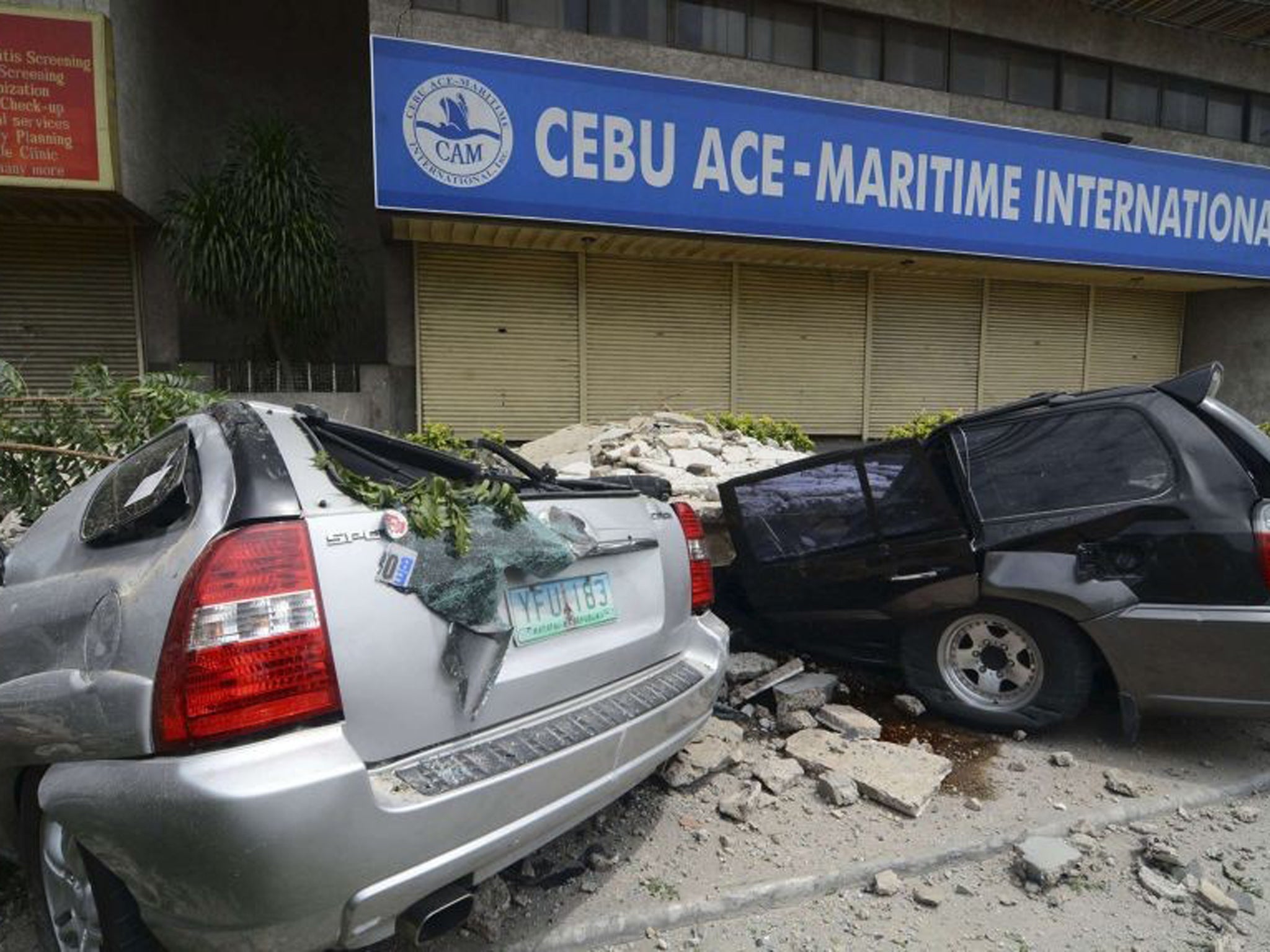Philippines earthquake: Death toll rises in tourist islands Bohol and Cebu
Markets and buildings collapsed in Bohol and in the nearby Cebu province when the 7.2 magnitude quake struck

A strong earthquake with a magnitude of 7.2 has struck popular tourist islands in the Philippines killing over 90 people, some of whom were hit whilst praying in a centuries-old church, according to reports.
Panic was sparked when low-rise buildings collapsed on at least two islands and historic churches crumbled during the quake. Areas were hit by power cuts, stopping some transport links and forcing hospitals to evacuate patients to open spaces as aftershocks rocked the city of about 870,000 people.
The Associated Press have put the death toll up to "at least" 93 and more than 260 left injured.
Markets and buildings collapsed in Bohol and in the nearby Cebu province when the quake struck at 8.12am this morning. A state of calamity has been declared by the Government in both provinces, state media reported.
Local police report that 77 were killed on nearby Bohol island, where the epicentre of the quake was located and another on Siquijor island according to Rey Balido, a spokesman for the National Disaster Risk Reduction and Management Council (NDRRMC).
At least 15 people died on the island of Cebu, he said. Eight people who had been queuing with others for government aid payments in Cebu were hurt in a stampede caused by the quake.
There were no reports of any foreign tourists among the casualties.
Airline Cebu Pacific cancelled flights to Cebu and Bohol due to the aftershocks and partial damage to airports. Ferry services were also suspended. The Philippine volcanology agency reported at least 20 aftershocks after the initial quake, which was measured at a depth of about 56 km (35 miles).
Transport Secretary Joseph Emilio Abaya told Philippine radio that parts of the Tagbilaran port in Bohol had cracked and collapsed. No tsunami warnings were issued although Indonesia's Disaster Mitigation Agency issued a precautionary warning of possible high waves for an area stretching from North Sulawesi to parts of Papua.
Archbishop Leonardo Medroso of Tagbilaran city in Bohol said two people were killed by falling debris whilst praying in a church in the town of Loon. The church is Bohol's biggest and dates back to 1753.
He said a church in Loboc town had also been damaged by the quake Both churches were designated historical treasures, he said. The belfry of the Baclayon church in Bohol province had also crumbled and its facade cracked.
“The damages, at least based on our initial assessment, are enormous,” Medroso told Philippine television.
“The quake was really strong. I am 75 years old already, I have undergone so many earthquakes, but this is the strongest I have experienced,” he said.
Television pictures showed that the belfry of the Basilica Minore del Sto. Niño de Cebu, which was also built in the 1700s, had collapsed.
Strong quakes are not uncommon in the central Philippines.
Tens of thousands of people were ordered from their homes when a tsunami warning was issued after an undersea quake in the region in September 2012.
One person was killed in that quake, which resulted in only minor damage and small waves in some areas.
Additional reporting by Reuters
Subscribe to Independent Premium to bookmark this article
Want to bookmark your favourite articles and stories to read or reference later? Start your Independent Premium subscription today.

Join our commenting forum
Join thought-provoking conversations, follow other Independent readers and see their replies